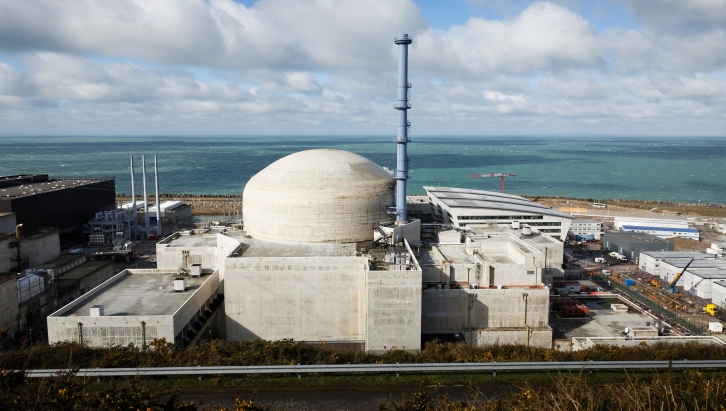According to the Energy Information Administration (EIA), combustion of coal emits about 210 pounds of CO2 per million British thermal units (BTU) of energy. In comparison, oil emits about 160 pounds of CO2 per million BTU, and natural gas emits 117 pounds of CO2 per million BTU.
Another issue with coal is that there are a lot of other associated emissions from coal-fired power plants. Historically, coal plants emitted a lot of sulfur dioxide, which causes acid rain. Regulations eventually reined in that problem, but coal-fired power plants still emit pollutants like mercury. They even emit more radioactive elements than a nuclear power plant. Thus, there have been many regulations passed that have attempted to lower coal’s impact on the environment.
But, because of the various pollution issues associated with coal, most developed countries have moved away from coal-fired power.
Although global coal consumption modestly declined in 2019, over the past decade it grew by an average annual rate of 0.8%. Nevertheless, global growth has been in a downtrend over the past five years.
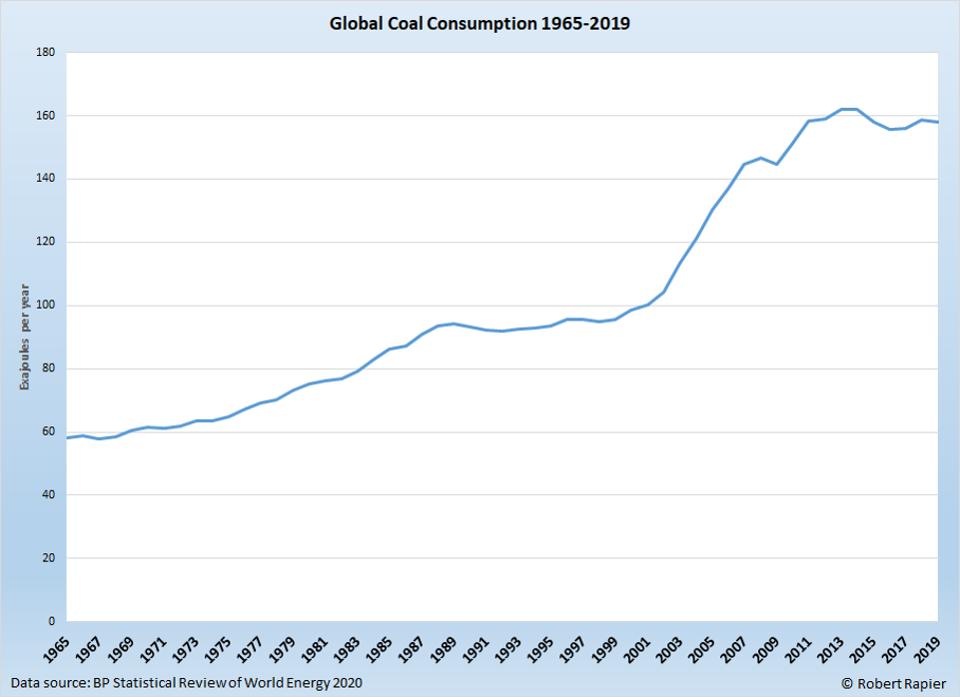 Coal Consumption 1965 to 2019 ROBERT RAPIER
Coal Consumption 1965 to 2019 ROBERT RAPIER
Growth is especially taking place in countries in the Asia Pacific region, which have seen coal consumption climb at an average annual rate of 2.4% over the past decade. This growth has been led by China and India, globally the #1 and #2 consumers of coal.
Six of the world’s ten largest consumers of coal are in the Asia Pacific region. Indonesia and Vietnam posted exceptionally strong growth rates in 2019 of 20.0% and 30.2%, respectively. Below were the world’s Top 10 coal consumers in 2019. “Change” refers to the growth or decline from the previous year.
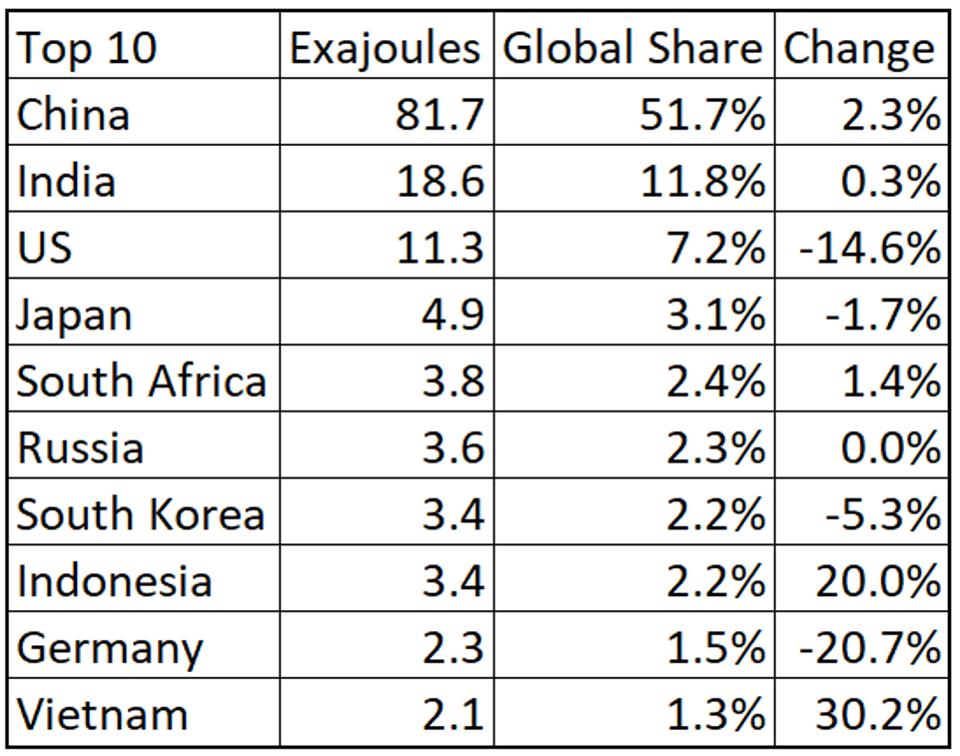 Top 10 Coal Consumers ROBERT RAPIER
Top 10 Coal Consumers ROBERT RAPIER
China also dominates the world’s coal production, but coal producers are geographically more diverse than coal consumers. Below were the world’s Top 10 coal producers in 2019:
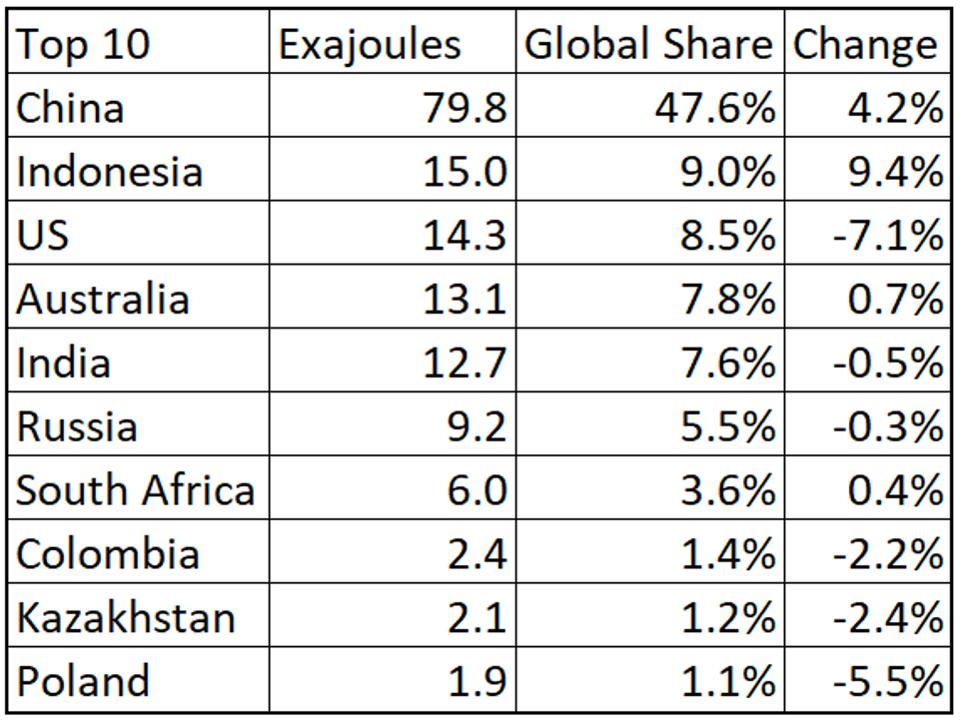 Top 10 Coal Producers ROBERT RAPIER
Top 10 Coal Producers ROBERT RAPIER
Within the 37 countries that comprise the Organisation for Economic Cooperation and Development (OECD), coal consumption peaked in 2007 and has declined at an average annual rate of 2.8% over the past decade. Consumption in 2019 was 35% below the 2007 level in OECD countries.
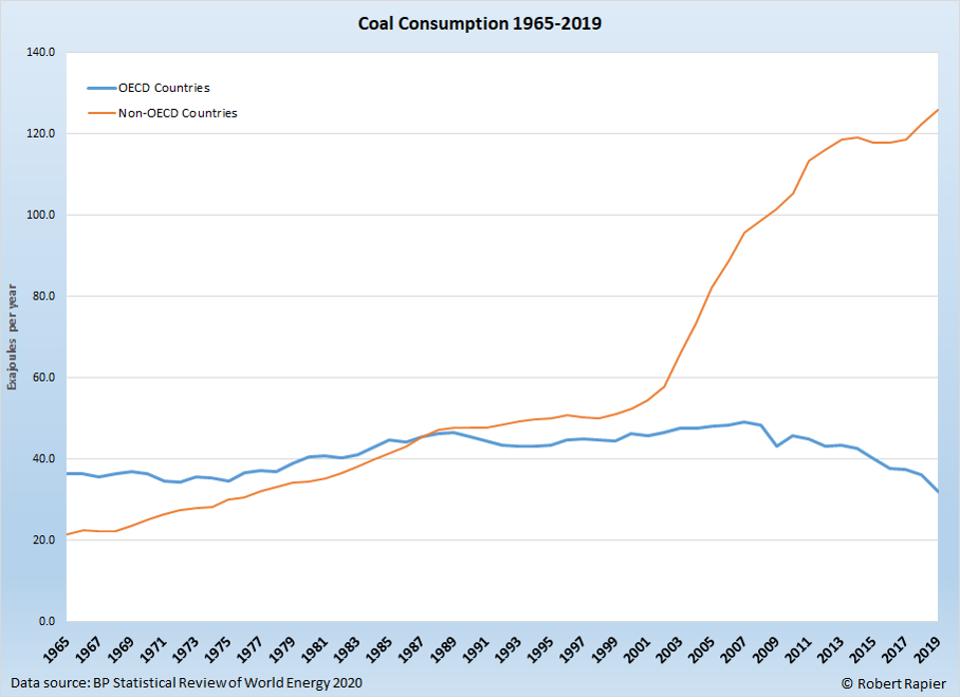 Coal Consumption OECD and Non-OECD ROBERT RAPIER
Coal Consumption OECD and Non-OECD ROBERT RAPIER
The decline in the U.S. has been even more dramatic. Coal consumption in the U.S. peaked in 2005, but remained at a pretty constant level until the financial crisis of 2008. At that point, U.S. coal consumption began to decline at an average annual rate of 5.1% for the next decade. U.S. coal consumption declined another 14.6% in 2019, and is now 50.4% below the peak level.
The dramatic decline in U.S. coal consumption is the primary reason U.S. CO2 emissions have fallen sharply in the past decade. Coal consumption in power plants was displaced by cheap natural gas and renewables, both of which have a much lower carbon footprint.







